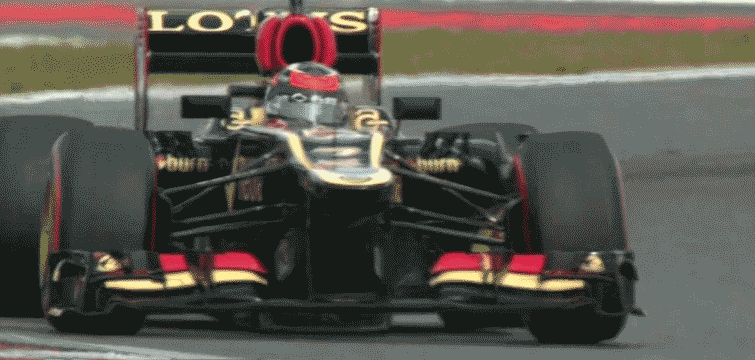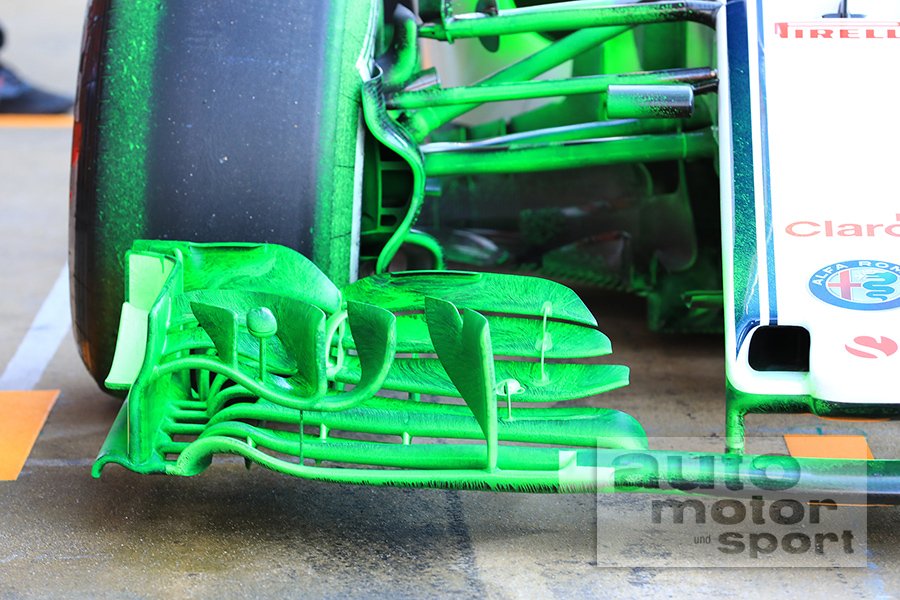That's the Sauber C37
- Login or Register
No account yet? Sign up
No.Danlizzyman wrote: ↑06 Mar 2018, 16:09That's the Sauber C37




But not directly - it is physically impossible for the air to turn downward to enter the inlet at normal racing speeds, so take that statement with a big grain of salt. Conditioning? Yes, I believe all are in agreement about that, although I still maintain my doubts for low speeds, and will do so until I see data that contradicts thempaddyf1 wrote: ↑06 Mar 2018, 17:09"As you can see in the drawing above, Sauber’s solution follows Ferrari’s principle of having two inlets, the second of which is located beside the cockpit (obscured by a winglet in the picture on the left, but indicated by the red arrow on the right).
However, Ferrari themselves have taken the design to another level in 2018, introducing a completely new inlet which works in harmony with a new wing mirror design (see drawing below). The idea is that a slot in the wing mirror allows air to flow through, thereby improving cooling into the inlet". Giorgio Piola.
Maybe with that AoA and configuration it is, but I think it is possible to turn the air in very steep angles.CBeck113 wrote: ↑06 Mar 2018, 17:19But not directly - it is physically impossible for the air to turn downward to enter the inlet at normal racing speeds, so take that statement with a big grain of salt. Conditioning? Yes, I believe all are in agreement about that, although I still maintain my doubts for low speeds, and will do so until I see data that contradicts thempaddyf1 wrote: ↑06 Mar 2018, 17:09"As you can see in the drawing above, Sauber’s solution follows Ferrari’s principle of having two inlets, the second of which is located beside the cockpit (obscured by a winglet in the picture on the left, but indicated by the red arrow on the right).
However, Ferrari themselves have taken the design to another level in 2018, introducing a completely new inlet which works in harmony with a new wing mirror design (see drawing below). The idea is that a slot in the wing mirror allows air to flow through, thereby improving cooling into the inlet". Giorgio Piola..

Testing cooling gills on the sidepods...Morteza wrote: ↑06 Mar 2018, 17:00https://pbs.twimg.com/media/DXnQqYAWkAI-EZk.jpg
https://pbs.twimg.com/media/DXnQpTKXkAQX_Ws.jpg
Via @F1debrief
You also have a big fat tyre deflecting air. Do not think that this would be possible without it. All those elements on the front wing are just there to guide the airflow where designers want it by making small corrections in flow path, the tyre is the main reason there is such a deflection in the first place.Big Mangalhit wrote: ↑06 Mar 2018, 17:27Maybe with that AoA and configuration it is, but I think it is possible to turn the air in very steep angles.
Just look at this image, the butterfly goes from an inner part of the wing to the outer part of the tyre in a very short distance. That is a much steeper angle of deflection.
http://i.imgur.com/Dazqvmu.gif

Yes, they didn't have them in the morning if I'm not mistaken.Mr.G wrote: ↑06 Mar 2018, 17:29Testing cooling gills on the sidepods...Morteza wrote: ↑06 Mar 2018, 17:00https://pbs.twimg.com/media/DXnQqYAWkAI-EZk.jpg
https://pbs.twimg.com/media/DXnQpTKXkAQX_Ws.jpg
Via @F1debrief
True, but at that point the car is driving into free air, and begins to displace the air...and the butterfly happened to go exactly through the elements on the wing where that deflection takes place.Big Mangalhit wrote: ↑06 Mar 2018, 17:27Maybe with that AoA and configuration it is, but I think it is possible to turn the air in very steep angles.CBeck113 wrote: ↑06 Mar 2018, 17:19But not directly - it is physically impossible for the air to turn downward to enter the inlet at normal racing speeds, so take that statement with a big grain of salt. Conditioning? Yes, I believe all are in agreement about that, although I still maintain my doubts for low speeds, and will do so until I see data that contradicts thempaddyf1 wrote: ↑06 Mar 2018, 17:09"As you can see in the drawing above, Sauber’s solution follows Ferrari’s principle of having two inlets, the second of which is located beside the cockpit (obscured by a winglet in the picture on the left, but indicated by the red arrow on the right).
However, Ferrari themselves have taken the design to another level in 2018, introducing a completely new inlet which works in harmony with a new wing mirror design (see drawing below). The idea is that a slot in the wing mirror allows air to flow through, thereby improving cooling into the inlet". Giorgio Piola..
Just look at this image, the butterfly goes from an inner part of the wing to the outer part of the tyre in a very short distance. That is a much steeper angle of deflection.
http://i.imgur.com/Dazqvmu.gif
First of all it is not a big fat tyre, it a very elegant and beautiful tyre (#alltyresarebeautiful).Vanja #66 wrote: ↑06 Mar 2018, 17:36You also have a big fat tyre deflecting air. Do not think that this would be possible without it. All those elements on the front wing are just there to guide the airflow where designers want it by making small corrections in flow path, the tyre is the main reason there is such a deflection in the first place.Big Mangalhit wrote: ↑06 Mar 2018, 17:27Maybe with that AoA and configuration it is, but I think it is possible to turn the air in very steep angles.
Just look at this image, the butterfly goes from an inner part of the wing to the outer part of the tyre in a very short distance. That is a much steeper angle of deflection.
http://i.imgur.com/Dazqvmu.gif

The idea makes no sense and therefore is nonsense. It's not an insult, it's an observation that the idea doesn't appear to hold water because it makes no sense. If the mirror was differently shaped and positioned then it might make sense but it isn't so it doesn't.